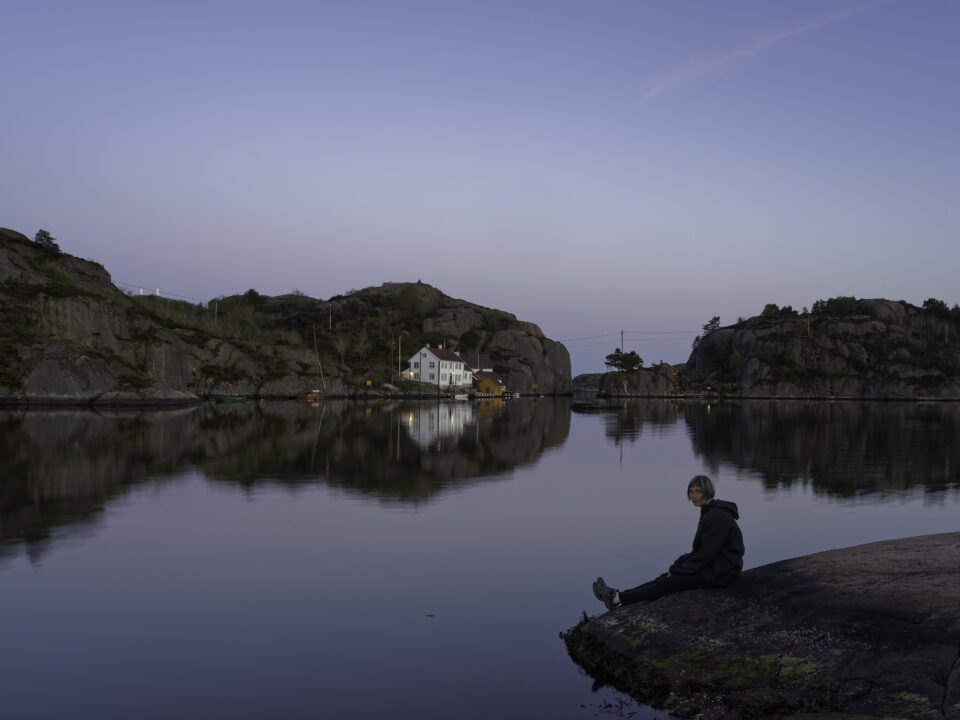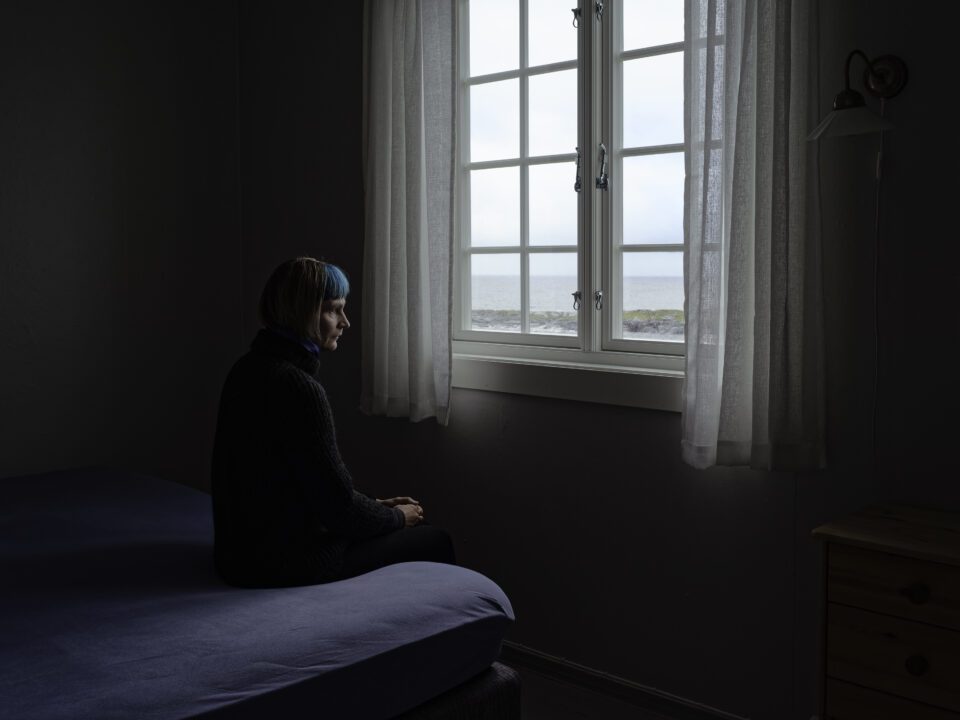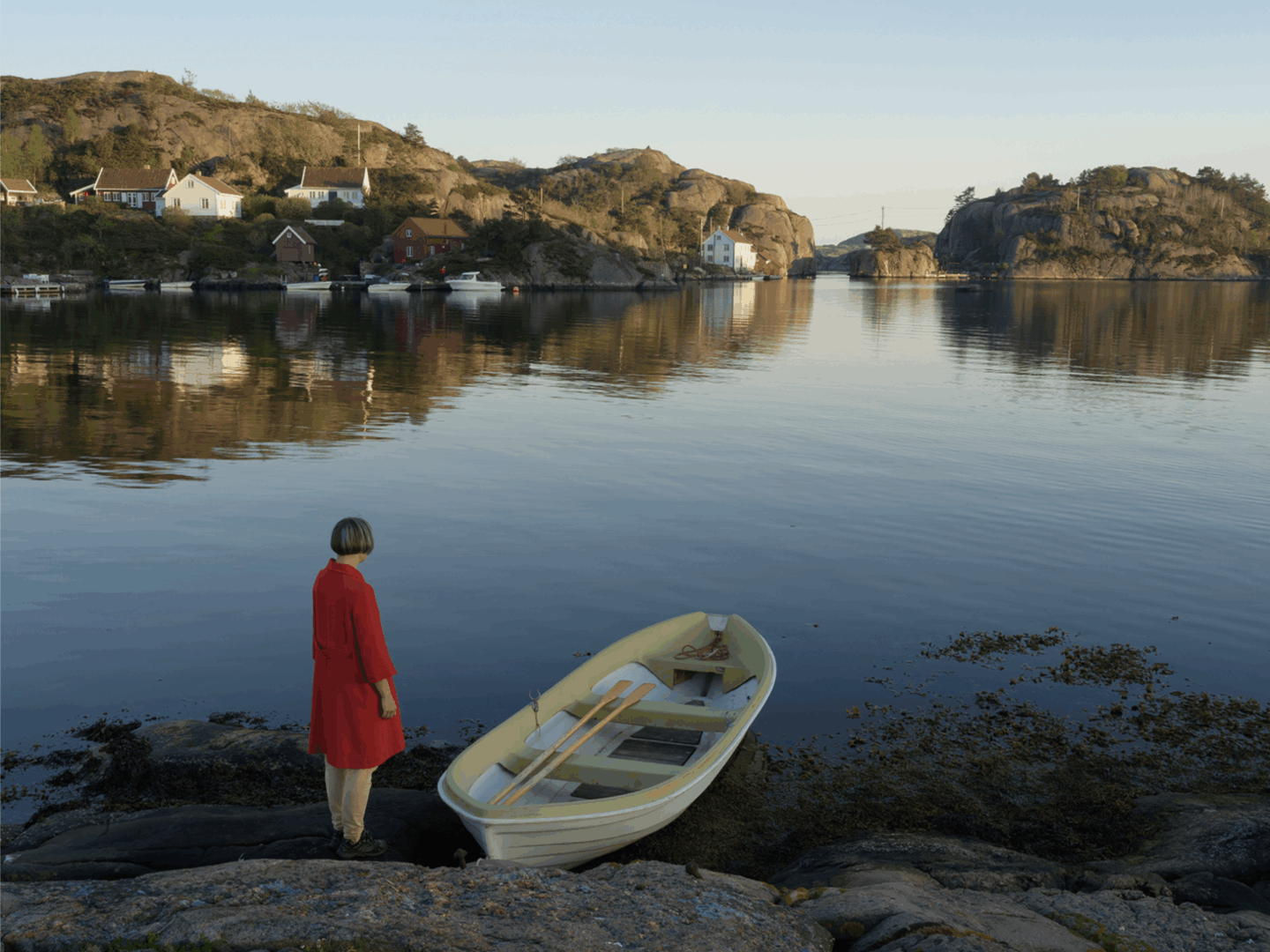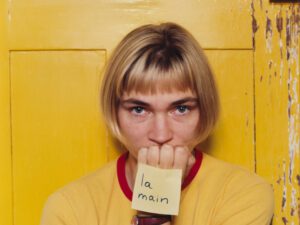Elina Brotherus’ (b. 1972) series Seabound (2018-2019) began with a misunderstanding. She was working on a project in Norway, carrying a small book of prompts from performance artist Kurt Johannessen in her camera bag. He is famed for øvingar – short, poetic exercises – one of which captured Brotherus’ imagination. It was written in Norwegian, and she thought it read: “Seabound, two nights in a row.” The artist recalls: ”I thought: how beautiful. That’s me! I was in the outer archipelago and was drawn to the sea all the time, day and night.” It was a perfect fit, and Brotherus got to work. Later, she realised this was a mistranslation and her poetic interpretation was incorrect. She’d confused the Swedish word for “bound” with the Norwegian for “bottom.” Johannessen was referring to the physical seabed, not a romantic yearning for the ocean. But it was too late – the concept had already left its mark.

The first image to come from these instructions is quietly striking: the artist gazes out over a wide expanse of water, in the evening, wearing a red coat. It sets the tone for Seabound, which incorporates her characteristic techniques with sweeping vistas and expansive stretches of water. The rückenfigur – a compositional technique showing a figure from behind – recurs across her work. It’s a technique that has made her enigmatic portraits instantly recognisable, often filled with a sense of melancholy. The series is on display at Martin Asbæk Gallery, marking the first time they have been exhibited in Denmark. In some of the self-portraits, the protagonist is separated from the outdoors by windows and her longing is tangible. In others, she teeters on the edge of rocks, face-to-face with the sea. The images were taken over two years, in locations right along the Norwegian coastline – the second longest in the world. She traverses various archipelago, grain silos, rocky outcrops and, once, a lighthouse in a November storm. Her isolated protagonist is dwarfed by the landscape, and it’s hard not to feel in awe of the natural beauty on display.

The photographer has long taken inspiration from fellow artists, writers and thinkers; it’s a hallmark of her creative approach. Meaningless Work (2016 – present), for example, was influenced by the seminal The Mirror and the Lamp by scholar M. H. Abrams, which argued that art should do more than reflect the world, it should cast it in a new light. Seabound itself draws from a dynamic range of sources, as Brotherus explains: “Other triggers behind images in this series include 19th century paintings in Sørlandets Kunstmuseum’s collection, event scores and other references by Yoko Ono, John Baldessari, VALIE EXPORT or Geoffrey Hendricks.” It is a testament to the creative power of the “happy accident.”
Seabound is at Martin Asbæk Gallery, Copenhagen until 29 November: martinasbaek.com
Words: Emma Jacob
Image Credits:
1. Elina Brotherus, Aften i Ny-Hellesund (båt), 2018. Pigment ink print on Museo Silver Rag paper, 90 x 120 cm. Edition of 6 + 2 AP / Courtesy of the artist and Martin Asbæk Gallery.
2. Elina Brotherus, Aften i Ny-Hellesund, 2018, Pigment ink print on Museo Silver Rag_90 x 120 cm_Edition of 6 + 2 AP
3. Elina Brotherus, Watching the Sea through Different Windows, Hopper Bedroom, 2019. Pigment ink print on Museo Silver Rag paper 90 x 120 cm. Edition of 6 + 2 AP.





